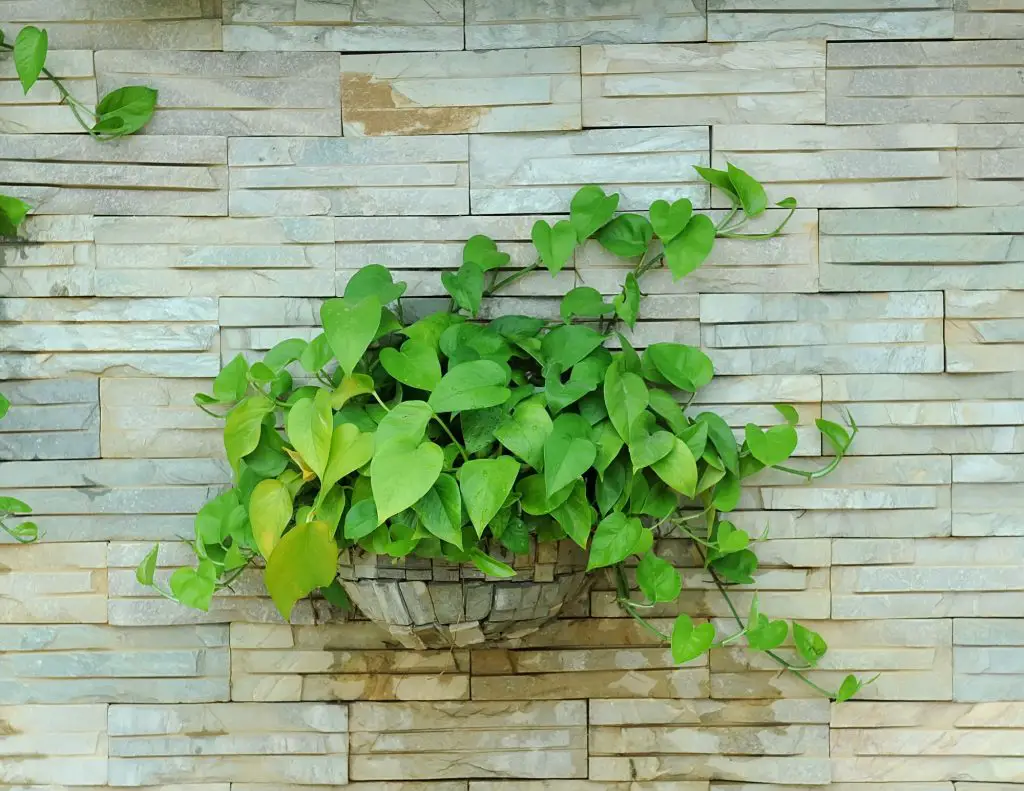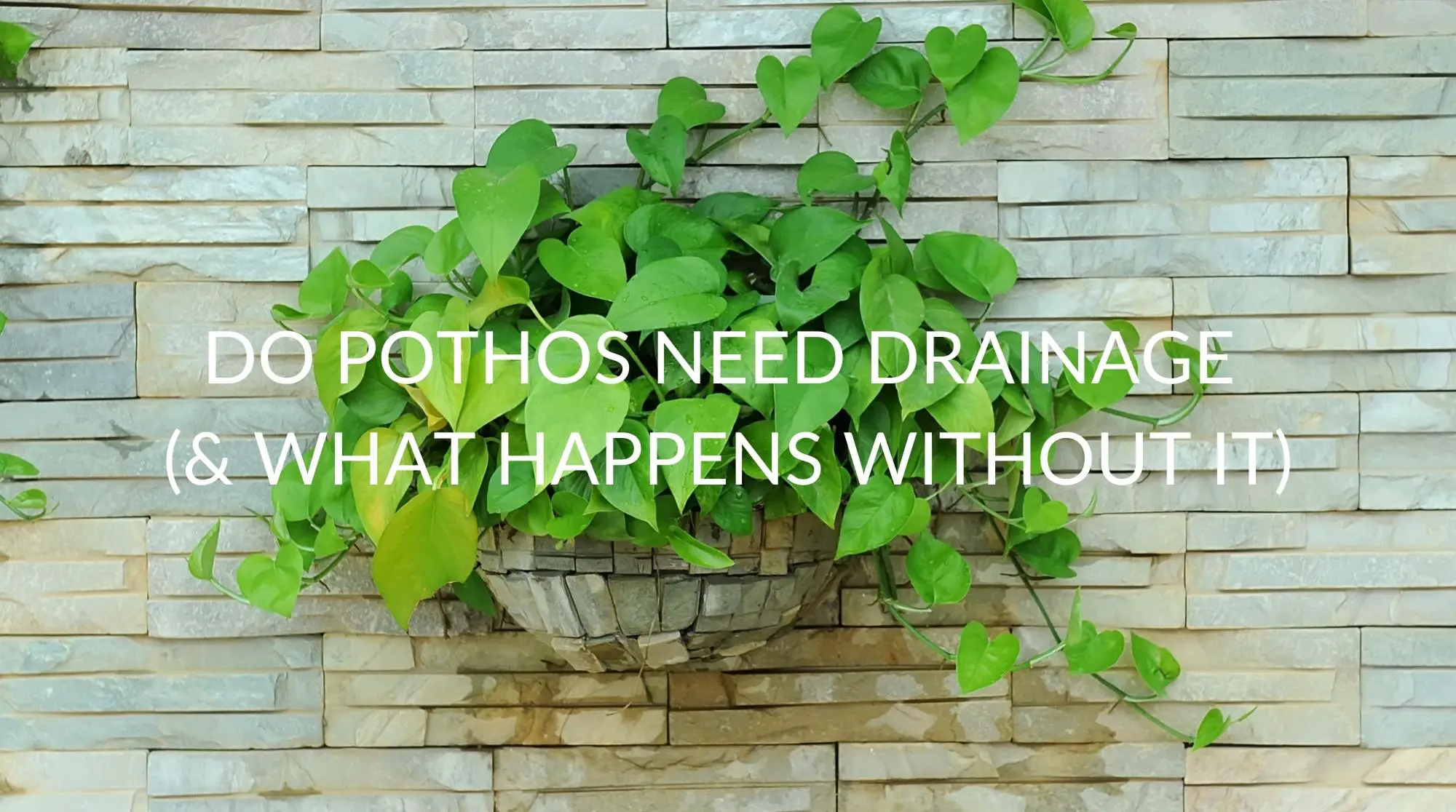Pothos, also known as the Devil’s Ivy, are popular for their unique aesthetic appeal and their reputation for being low-maintenance house plants. They are a great choice for those who want to begin taking care of plants. The Pothos plant is native to Southeast Asian forest floors and can grow up to 6 meters in length!
As a caring and loving plant owner, you might be wondering whether your Pothos plant still needs drainage to stay healthy. So, in this article, read on to find out whether Pothos plants require drainage and how to ensure that they get the best one they need!
Do Pothos Need Drainage?
Back in its native habitat, the Pothos plant grows on forest floors of Southeast Asia and crawls onto tree trunks using its special aerial root system. Since they are originally on damp forest floors where they get just the right amount of water to survive, there’s no need for them to have artificial drainage; after all, they’re not in pots.
But once we place them in our homes where we keep them as indoor plants, we do our best to help them not just to adapt to our new environment; we want them to grow and thrive. When we keep them in pots, their need for proper drainage becomes apparent.
Pothos plants, just like other plants, need adequate drainage for them to stay healthy. Without a good drainage system, they become waterlogged, affecting their health.
Why do Pothos Need Drainage?
When you give your Pothos a little too much water without proper drainage, your soil gets boggy. This situation stresses your Pothos plant and can cause several issues.
Root Rot
Root rot happens when Pothos plants get prolonged exposure to overly moist soil. When your soil receives too much water without any drainage, this can drown your plants’ roots and makes them unable to absorb all the necessary components to survive, such as oxygen, potassium, and other nutrients.
If this happens continuously, your Pothos plant will develop a case of root rot. As your roots get affected, they would become brittle and turn black. You may also notice a foul smell coming from your roots.
Yellow and Brown Leaves
Overwatering your Pothos can make your leaves turn yellow and brown, but this can also be due to a lack of good drainage, such as when your pot saucer is filled with water. Improper soil moisture can affect the roots as well as the leaves. Having yellow and brown leaves is usually not a good sign, and together with root rot, it is a recipe for disaster.
If you see your Pothos plant showing both of these symptoms, it’s time to repot your plant to avoid further infections.

How to Get Good Drainage in Pothos Pots
Now that we’ve learned how important it is for your Pothos plants to get proper drainage, it’s time to learn how we can do it.
Use Pots With Holes
The simplest way to give your Pothos plant a good drainage system is to place it in a pot with at least one drainage hole or slit at the bottom. Having a hole allows excess water and moisture to drain from your soil. As a result, your Pothos can be safe from being waterlogged even when you accidentally give it too much water, also avoiding a bad case of root rot.
Check Your Drip Tray
Another thing you can do to give good drainage to your Pothos is by providing it with a drip tray and making sure that it is not filled with water. A drip tray full of water at the bottom of your plant pot can also cause soggy soil, which is harmful to your Pothos.
Watch Your Water
Pothos are thirsty plants: That’s a fact. But, giving your Pothos too much water than what it really needs can do more harm than good, as explained above. Your Pothos will thrive in damp soil, but not wet, boggy ones. Instead of relying on your senses in watering, check your soil. If the top to the middle part of your soil is dry enough, it’s time to water your Pothos.
Choose Your Soil
Although Pothos plants do well in different types of soil, placing them in a well-draining potting mix will make them healthy. You may also opt for soil-free mixtures with peat moss, vermiculite, or perlite for the most optimum health of your Pothos.
Be careful with using soil mixtures without air pockets as they can prevent excess water from draining well. Choosing the best soil mixture for your Pothos will not only avoid rot root; it can also help it thrive!
What Drainage Pot for Pothos Plant?
The drainage systems for your Pothos depend entirely on what pot you would put them in. Some plant owners choose hanging pots as Pothos look exquisite as a hanging plant decoration, while others put them in regular pots. Whichever you choose, make sure that your pot has a drainage hole at the bottom.
Plastic pots are always a cheaper choice, but they don’t promote good drainage for your Pothos as they preserve moisture in your soil. Clay pots are a better choice because they are porous, which means they can absorb excess moisture when you water your Pothos plant.
You should also consider the size of your pot. If your small Pothos plant is placed in huge pots, this can also cause water retention in your soil.
Recap
Although Pothos plants are generally considered low-maintenance plants, they still need proper care, and that includes a good drainage system. Without it, your plant will become vulnerable to different illnesses and will have further problems.
Therefore, it is important to give your Pothos plant a good drainage system, whether you’re using a hanging pot or a regular pot. By putting your Pothos plant in a right-sized porous pot with the perfect type of soil, you’ll have a healthy, happy Pothos with a long life!
If you liked this article, make sure you check out the rest of the website! Otherwise, have a great day!


